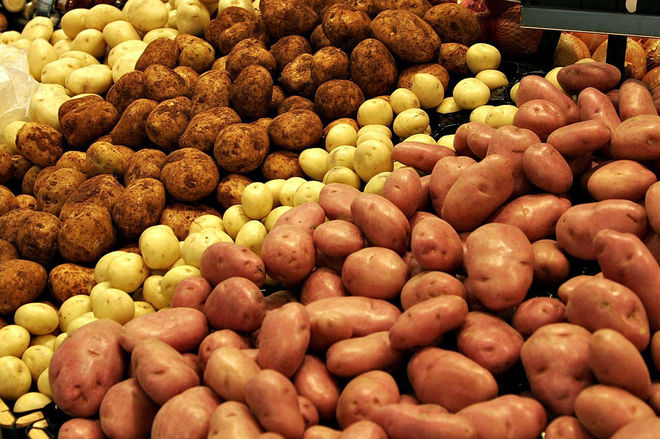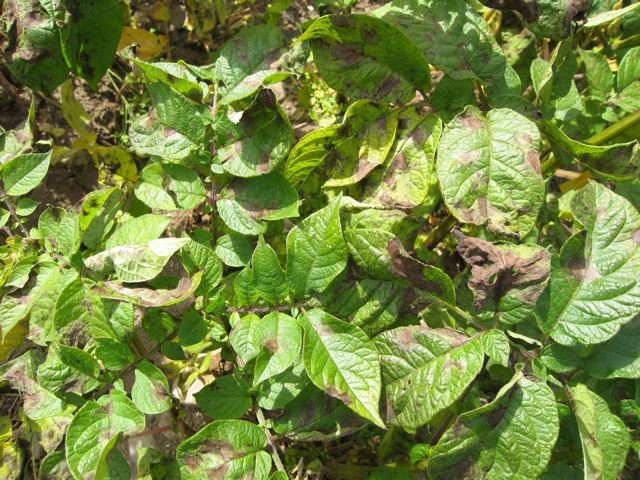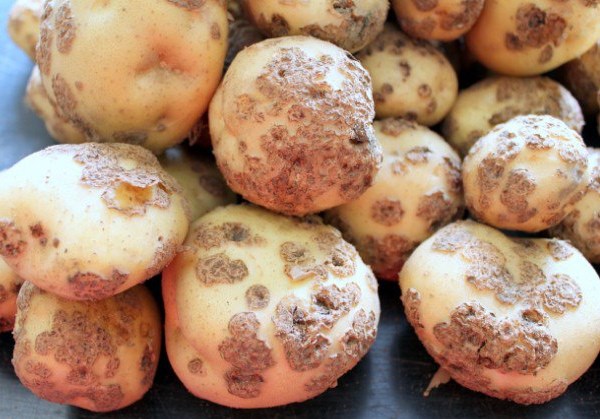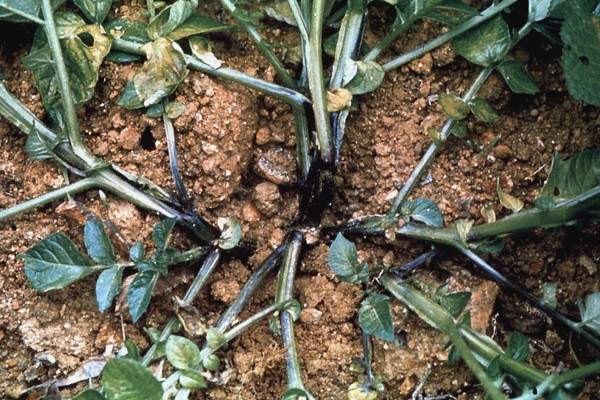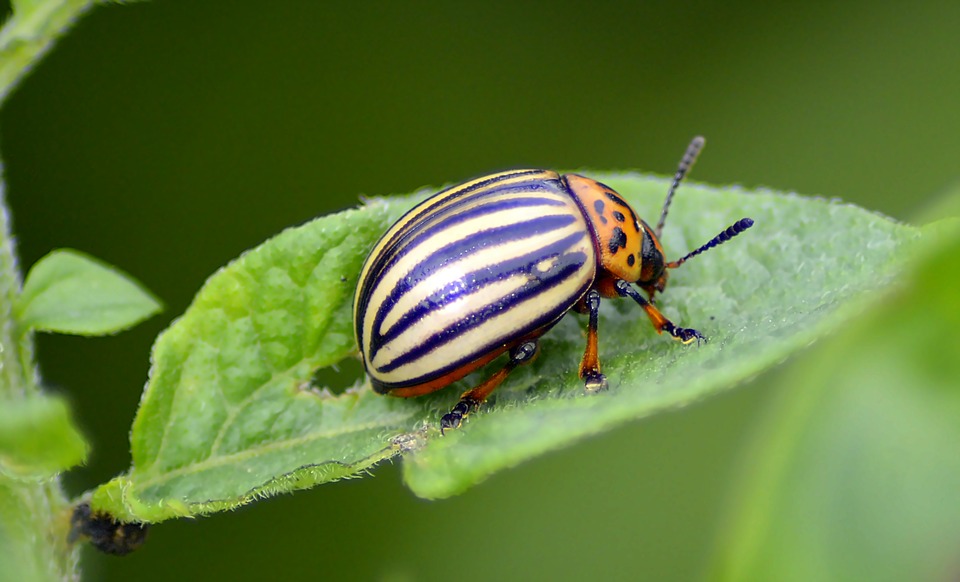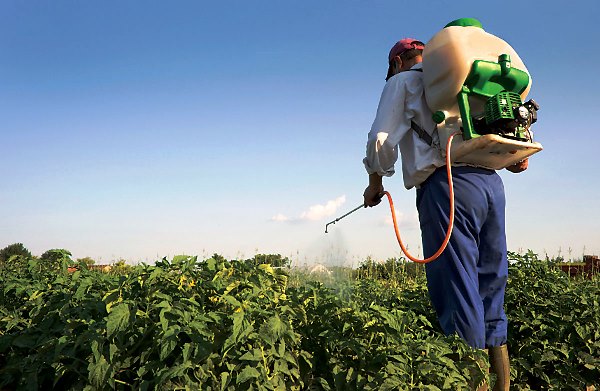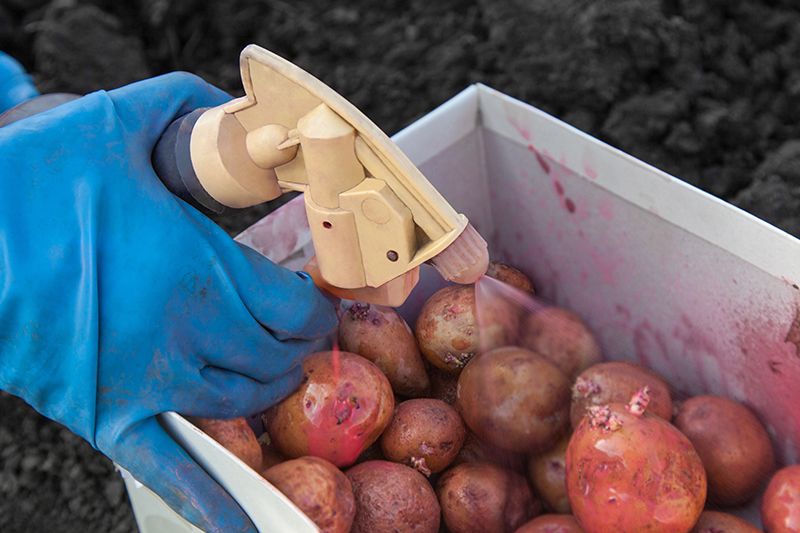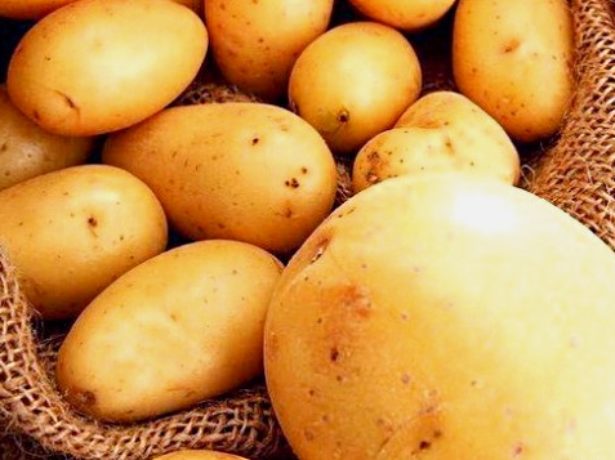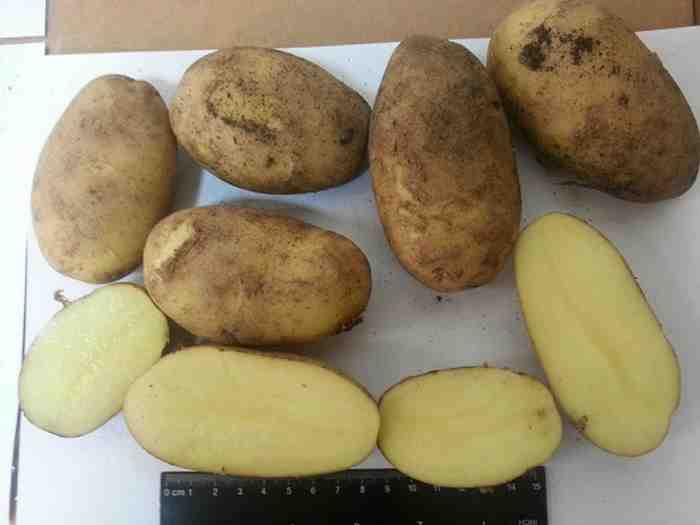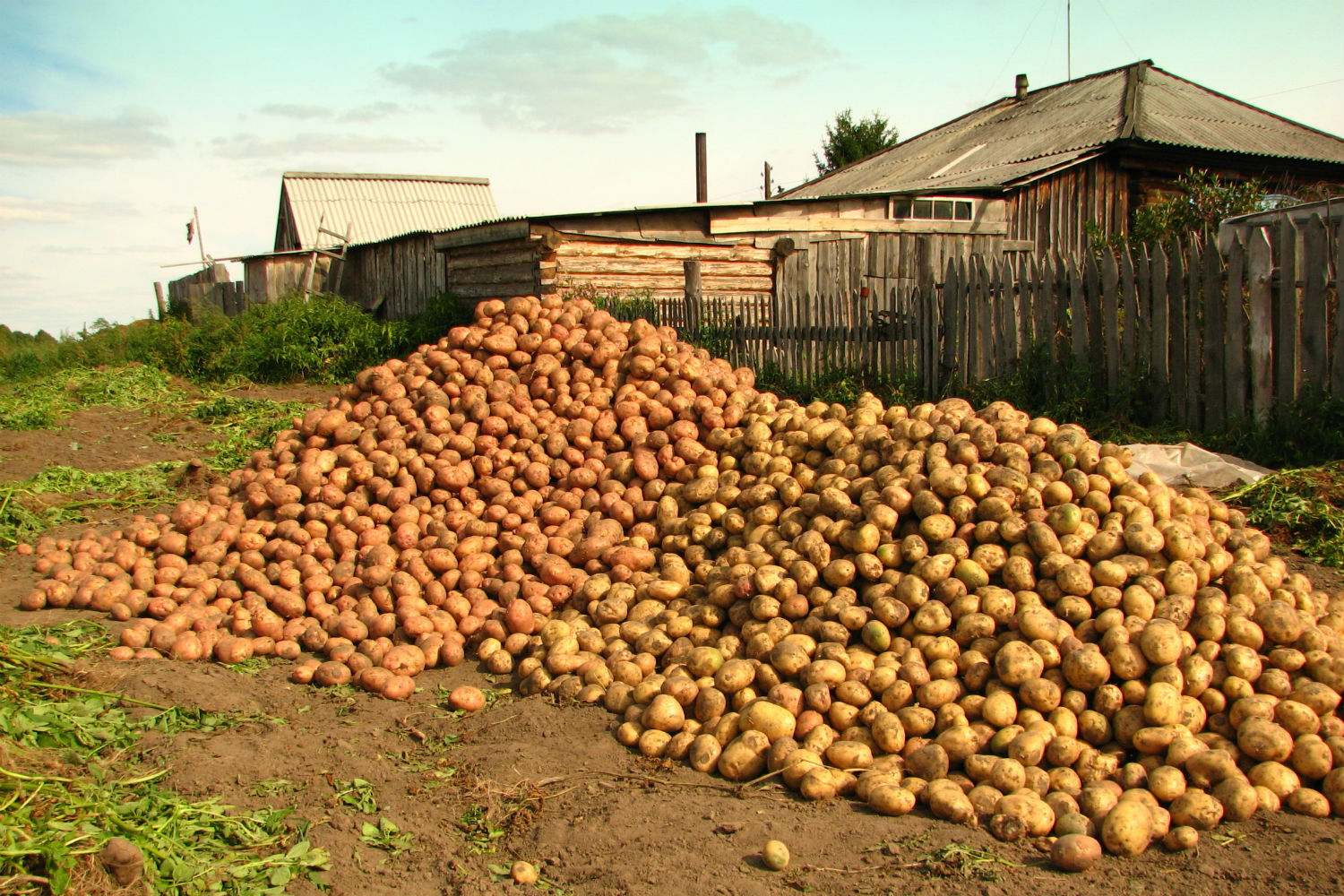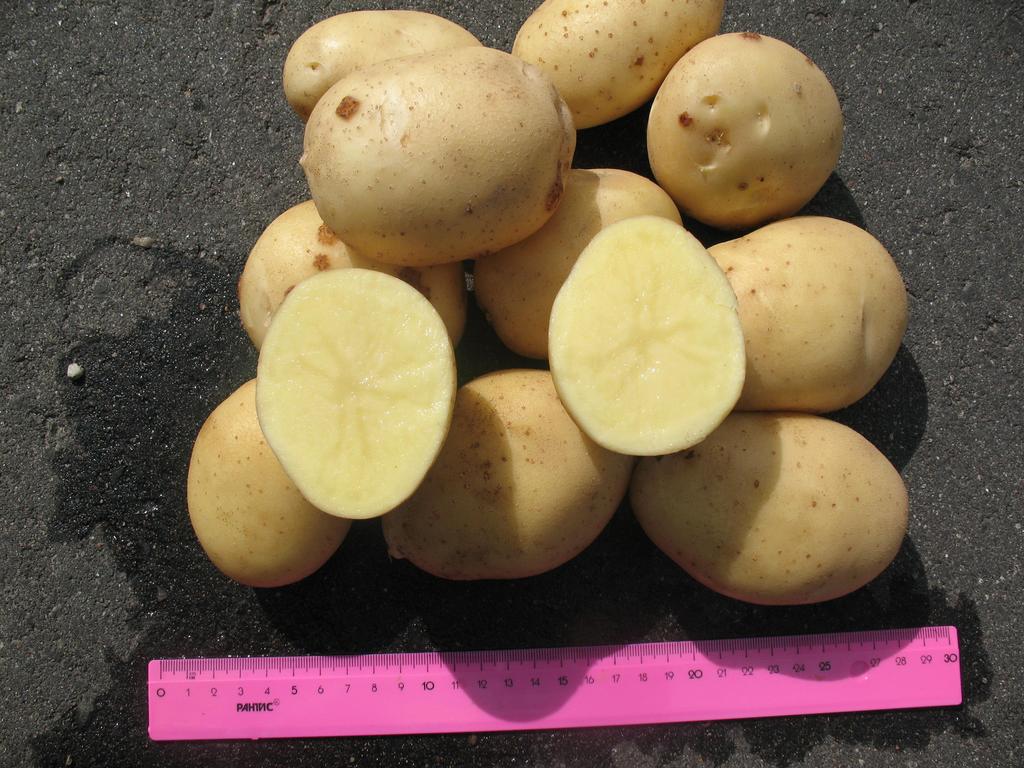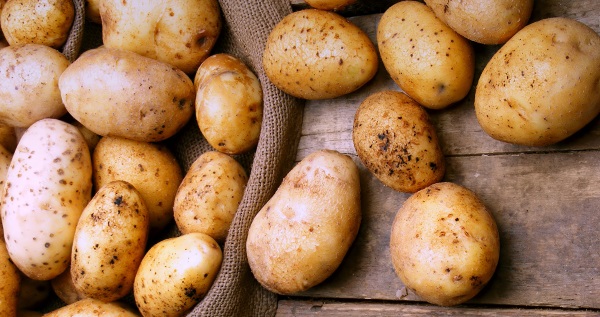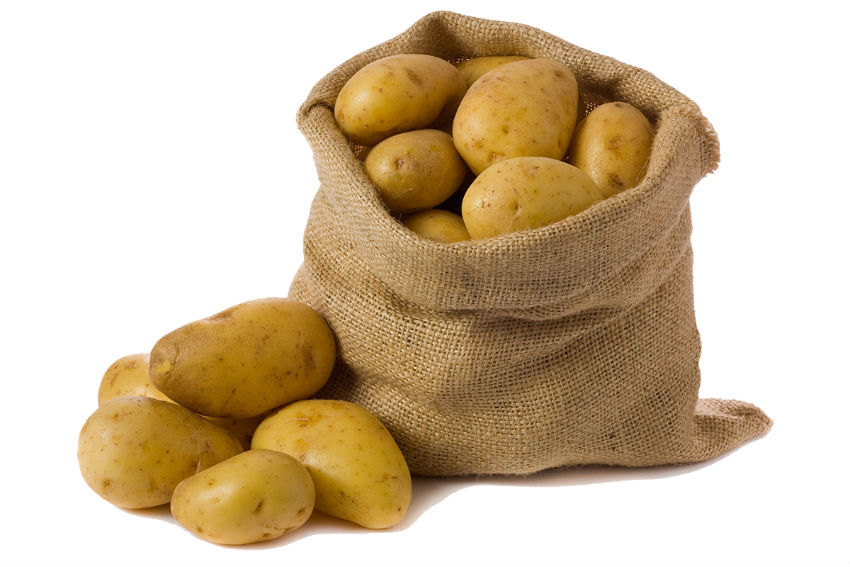Content:
It is customary to call potatoes “the second bread” in the world. Man has been familiar with this culture for over 13,000 years. In Europe, it has been actively cultivated for about 400 years. During this period, potatoes have repeatedly become a salvation for many regions.
About potatoes
When domesticated, potatoes are an annual plant. It is considered perennial in a wild state, belongs to the genus Solanaceae. Today, agronomists have more than 150 varieties of such a crop. Their description makes it clear that digging the fruits on the eve of winter is mandatory, because they cannot withstand severe frosts. They are planted annually in the spring.
All potato varieties have the same structure: root system, stem, leaves and fruits. The latter are a multi-seeded berry. During the flowering period, flowers appear on the top of the plant.
The chemical composition of potatoes differs depending on the variety, harvest period and storage time. In most cases, potatoes contain in their composition: starch, fructose, sucrose, crude fat, glucose, crude protein, salicylic, oxalic, malic and citric acids, copper, zinc, fluorine, magnesium, phosphorus, iodine, potassium, selenium, multivitamins, vitamins of group B, as well as C, K, PP.
Potato diseases
Just like a person, potatoes can suffer from various diseases of bacterial, viral or fungal origin. Some of them are easy to recognize, others are "diagnosed" already at later stages, when the harvest cannot be saved.
Late blight
Moisture and warm weather contribute to infection. The cause of infection is the mycelium of late blight. The secondary cause is oospores entering the soil. The disease can spoil at least 20% of the crop.
Gradual damage occurs to all parts of the plant. The first sign is the appearance of brown spots on the leaves. Over time, the affected area grows, and a characteristic gray (or white) coating appears on the underside of the leaf. Experienced farmers immediately understand that these are fungal spores. Dark and oblong spots also appear on peduncles and stems. If no action has been taken, the affected area is completely drilled and dried in dry weather. In wet weather - blackening of the plant and gradual drying out.
The infection is also recognized by the appearance of the fruits themselves. Potato contains at first small, and then all large dark spots. Relief they go deep into the vegetable. If you peel the peel, you can see that the pulp itself has become soft, rusty in color.
To prevent the problem, potato fungicides should be used even during the budding period of the plant.
Common scab
Significantly reduces the taste and nutritional properties of potato scab.Most often it develops during a drought, when the air temperature rises to 25-27 degrees Celsius. It is more likely that the tuber will suffer if the soil is slightly acidic, or if the plant has been treated with fresh manure or a large amount of lime.
The main problem should be pointed out harmful microorganisms living in the soil for several years, as well as the remains of old tubers.
Basically, the potato itself, that is, its fruits, suffers from ordinary scab. Rarely roots. In most cases, common scab affects fruits with a thin skin and small in size (up to 3 cm).
Agronomists distinguish several types of scab, depending on its manifestations: black, powdery, silvery.
You can prevent the problem if you are not lazy and plant the potatoes deeper. Enough oxygen is needed for bacteria to multiply, but there is little oxygen at depth.
Blackleg
It is a bacterial disease caused by the causative agent Pectobacterium carotovorum subsp. atrosepticum. The loss of yield due to this disease can reach 60-70%.
In fact, immediately after germination, the leaves of the plant begin to turn yellow and curl into a tube along their main line. Subsequently, the stem becomes infected, and then the fruits. The lower part of the stem and root system rot and turn black, while the top remains green as before. The plant looks sick and is easily removed from the ground. A wet rotten bloom appears on the tubers themselves. Subsequently, the entire rind becomes dark in color, and the pulp is very rotten, with an unpleasant odor.
The disease can stop if the weather is dry and the air temperature is low. However, this does not mean that the pathogen has disappeared. It may appear next year, because it is stored in the garden. Prevention involves the use of the fungicide Maxim.
Among other dangerous diseases that can significantly reduce the yield of potatoes, it is also worth mentioning the following: potato alternaria, cancer, achat, phomosis, potato nematode, ring and brown rot, tuber necrosis, gothic tubers, potato mosaic.
The main enemies of the potato
Potatoes can be damaged not only by viruses and fungi, but also by various insects. If you do not notice such in a timely manner, then the crop can be completely destroyed.
Potato beetle
This pest is especially dangerous for the crop. It was first recorded in 1859 in the United States, where it managed to destroy almost all the potatoes in a short time. The size of this insect reaches 10 mm. At an early age, it has a red color, later it becomes yellow with characteristic black stripes. The beetle has wings, and therefore can quickly fly over and overcome large territories. These potato pests lay large numbers of eggs on the underside of the potato leaf. They hibernate in the ground at a depth of 0.5-1 meters. In the spring they go out into the sun looking for food. Completely eating the leaves and stems, the insect can bury itself in the ground for wintering, or (if the warm season has not yet ended) move on to the leaves of tomatoes, bell pepper. The intense heat forces these pests to fly 10 kilometers or more in search of better living conditions.
Potato scoop
The potato scoop is one of the most beautiful potato pests, it is a butterfly. It has a gray or brownish color, the wingspan reaches 3-4 cm. The butterfly itself does not bring much harm, but it is a caterpillar producer.It is the latter that are distinguished by the greatest gluttony and are able to completely destroy the plant.
Other pests like to eat potatoes, in particular, beetles, bear, stem nematodes, wireworms and others.
How to treat potatoes
Of course, many farmers are interested in the question: what to do when a nematode, black leg, dry rot of potatoes are found, how to deal with these pathologies. Experts point to several effective ways to combat.
Fungicides
Fungicides are chemicals used to treat plants. They are chosen according to which fungus causes the disease of the potato, virus or bacteria.
- Rizoplan. A biological preparation that effectively fights against: late blight, black leg, brown rust, gray rot, helminthic rot and many others. Can be used up to 4-5 times per season.
Its undoubted advantages are:
- no impact on the ecology of the product;
- not addictive;
- can be used at any stage of plant growth.
- Celestop is a potato dressing and useful medicine. As farmers testify, the use of the product helps to delay the appearance of late blight for at least a week. Helps in the fight against silver scab, phomosis, anthractosis, as well as pests such as the Colorado potato beetle, aphids;
- Trichodermin is a potato dressing agent that provides protection against: root rot, powdery mildew, scab, late blight, ascochitis. It can be used both during the manifestations of these diseases, and for prevention purposes. Trichoderminum can be used for spraying or treating seeds, seedlings of other plants, tubers before planting;
- Respect - for treating potatoes against fungal and bacterial diseases. A feature of the product is to stimulate plant growth and improve the immune system;
- Maxim - protection of flowers and potatoes (the instruction of the drug indicates this) from any varieties of scab and rot, late blight.
If growing potatoes is complicated by the rapid germination of weeds, it is appropriate to use the herbicide Zenkor. It does not negatively affect the vegetable, but relatively quickly it can cope with parasitic plants.
Zontran (the instructions for use for potatoes indicate this) ensures a clean growth of the necessary plants, is able to influence both the roots and leaves of weeds.
Agrotechnical measures
A good way to prevent potato diseases is by following the recommended planting technology. Using self-grown high-quality tubers for planting, you can count on a healthy harvest. Proper storage is important for propagating potatoes. It is never allowed to keep it damp (dry) or in a damp place. Fungi are very fond of such an environment, so the tubers will become sick even before they enter the garden.
For those who call biological products for processing potatoes "chemistry" and are afraid of poisoning, agronomists offer more natural methods. Treatment of late blight can be carried out with a saline solution. To prepare this, you need to dissolve 1 kg of salt in a full bucket of clean water. This liquid will provide a protective layer on the leaves of the plant.
Another option is formula milk. To perform it, you need to mix milk (or kefir) and iodine.
Features of pest control
Dressing potato pests is not the only way to control them.
Experienced farmers offer several optimal options:
- Mechanical. Physical picking up of some pests is expected. Most often, in this way, the owners are fighting the Colorado potato beetle. Sometimes it is shaken with a broom or collected by hand. It is important not to miss the eggs of parasites, because in a few weeks you will have to clean again.In the case of the bear, various traps are used, in particular beer bottles, manure pits;
- Agrotechnical. It is supposed to alternate planting of plants on the site. It is strictly forbidden to plant potatoes in the same place more often than 2-3 years in a row. The land should be dug up after harvesting the entire crop as deeply and efficiently as possible. Thus, before the frost, it will be possible to destroy the habitation of pests, the likelihood that the parasites will be destroyed increases. Also, next to the potatoes, you can plant those crops that scare off pests with their smell. Thus, the wireworm does not like alfalfa and peas very much;
- Biological. It is assumed to use preparations that are safe for vegetables and harmful to insects. These include, for example: fitoverm, bitoxibacillin, agravertin. Ash can protect potatoes (the golden nematode does not like such a tool very much);
- Chemical. They are used in the case when valuable time has already been lost, the culture is seriously suffering from the action of pests, therefore, more active struggle is required to resolve the issue. Among the most effective means of this type, the chlorophos treater should be indicated, as well as: Aktara, Bazudin, Nembakt, Aktellik, Patron.
Resistant potato varieties
You can get a good harvest if you successfully think over in advance which nematode-resistant variety to buy for reproduction. Farmers and breeders have named some of the best options.
Fresco
Bred in the Netherlands. Refers to early maturing varieties. Provides 450 kg of harvest from one hundred square meters. Resistant to: cancer, rhizoctonia, scab, nematodes, viral diseases. However, it can be affected by late blight.
Luck
Potatoes with especially good taste. From one hundred square meters of "Good luck" you can collect up to 800 kg. It is resistant to late blight, various types of rot, leaf-rolling virus. It can grow in any type of soil.
Adretta
Grown in Germany. It is a mid-season variety. Provides up to 600 kg of crops from one hundred square meters of land. Resistant to: ring rot, cancer and viral diseases, but can be affected by scab.
Lugovskoy
This is a late variety. With proper care, it gives up to 450 kg of potatoes from one hundred square meters. It is distinguished by its pale pink skin and white flesh. Resistant to potato cancer, it is considered conditionally resistant to: late blight, black leg, viral diseases and scab.
Belarusian 3
Late but very tasty variety. Provides 570-600 kg of potatoes from one hundred square meters. Resistant to nematodes. Has medium resistance to: dry rot, late blight, common scab, black leg.
Experts also call the following varieties good in terms of sustainability and yield: Bezhitsky, Pushkinets, Romano, Bryansky early, Zhukovsky, Nevsky.
